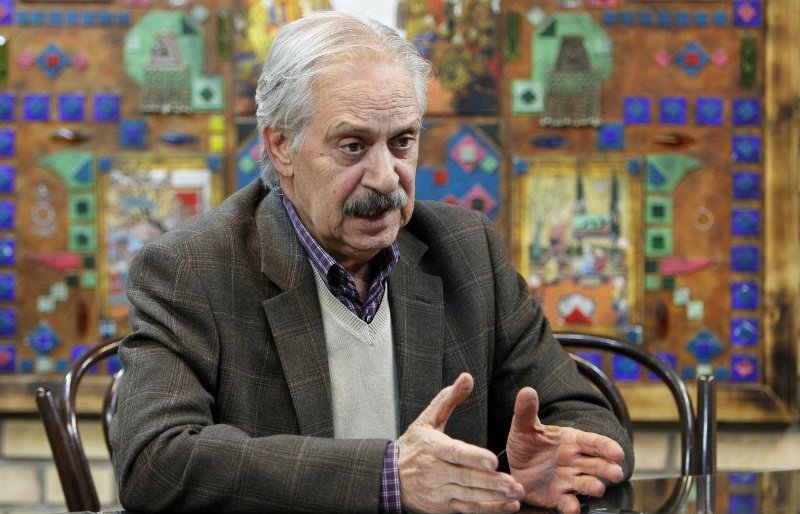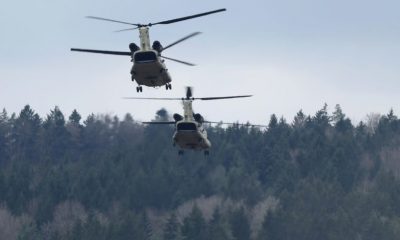The Chinese have unveiled a 12-point plan to establish peace between Ukraine and Russia. The most important principle emphasized in this plan is to maintain the territorial integrity of both the countries.
Ukrainian president Volodymyr Zelensky has already welcomed the Chinese proposal and it seems that the Russian President Vladimir Putin also has no objection to it at this stage.
This plan can be a prelude to the continuation of the talks in a bid to help Kyiv and Moscow to resolve the existing differences gradually to end this “great war” in Europe.
At the moment, the US President Joe Biden is apparently the most important opponent of the Chinese plan, who described it as a proposal in favor of Moscow. But among the European countries, this proposal earned immense support in order to end the war between the two countries.
Ali Bigdali, an Iranian expert on international affairs said that President Zelenskyy has welcomed the Chinese proposal. It seems that the world powers reacted in two ways to this peace plan proposed by Beijing.

Ali Bigdali, an expert on international affairs
US not happy, but Zelensky welcomes Beijing’s peace plan
The Westerners, especially the US, did not welcome this plan because they did not want Beijing to be involved in this and somehow win the war.
But on the other hand it is Zelensky who himself welcomed the peace plan and will likely visit China in coming days to follow the development closely.
Last week when Mr. Biden landed in Kyiv, the Chinese Foreign Minister also went to Moscow, where it can be said that he probably brought the same 12-point peace plan to Putin and reportedly he has accepted and welcomed it.
This 12-point peace plan is simple and has no controversial contents. Bigdali said that in his opinion, this plan was proposed as the beginning of negotiations to agree on the essence of the case.
There is a possibility that when representatives of both the countries meet in Beijing along with the Chinese delegation for the first time, they raise new conditions.
However, the good thing about this plan is that both Putin and Zelensky have agreed to it. Beijing is seen as a “heroic mediator” in this process and it is possible that this plan will bear fruits, according to Bigdali.
EU tired of supporting Ukraine
Bigdali said that it doesn’t mean that the Beijing peace plan will end anywhere because of the opposition of the US administration. “Europeans are a bit tired of supporting Ukraine,” he said.
Some time ago, one of the member states of the European Union said that although Ukraine is a part of European territory, it is not geopolitically important for them.
At the same time, there are several oppositions both in the European Union and in the United States against the continuation of war. However, Bigdali said that Mr. Biden wants to use this (Ukraine-Russian conflict) as a trump card for the 2024 election.
But the continuation of this situation and sometimes generous “Western aid” to Ukraine may endanger the future of this route, and therefore, everyone wants to end this matter openly or through some secret engagements.
The Europeans are more at risk than Americans as they are next door to Russia. They are also suffering from lack of energy. All this has made the European Union, unlike the US, to be happy with China’s plan to end the war in Ukraine.
Probably there were some secret delegations of the European Union that had met with Mr. Putin. 10 days ago, the Kremlin announced that the French president and German chancellor will have a meeting with Putin in the future. In such a scenario, it provides evidence that there are some secret conversations underway regarding the Russian-Ukraine war.
China wants end to the war
China has neither accepted the continuation of the war nor approved Russia’s actions. It was in September when the Speaker of the Chinese National People’s Congress visited Mr. Putin, but since then, the Chinese did not show any interest and support in this war.
There were speculations that China was waiting for Russia to dominate Ukraine in order to lay the groundwork for its own domination of Taiwan. But the ground reality appeared different and Beijing had no such intention.
The axis of Chinese power is based on economic activities and they never accept such war. Therefore, the Chinese don’t want war in the EU.
Russia supports China’s peace plan
The Russian sides have welcomed the Chinese proposal. In his recent speech, Mr. Putin confirmed the talks and agreed with the peace proposal. Apparently, this is the only plan that both Russia and Ukraine agree on. The fact that Zelensky is likely to go to Beijing is very important. He has enthusiastically accepted the peace plan and so far it seems positive. Among other elements, one of the points on this proposal emphasized is the territorial integrity of the two countries.
At the moment, there is a dispute over the Donbas region where 75% of which are under control of Russia. But this plan is just a lead up enabling the two sides to sit down and resolve other disputes together. China is a powerful state and that is why Zelensky enthusiastically accepted the plan and wants to visit the country to meet his counterpart in Beijing.
- Translated from Khabaronline.ir

 OPINION2 weeks ago
OPINION2 weeks ago
 DIPLOMACY1 week ago
DIPLOMACY1 week ago
 DIPLOMACY5 days ago
DIPLOMACY5 days ago
 ASIA1 week ago
ASIA1 week ago
 DIPLOMACY6 days ago
DIPLOMACY6 days ago
 MIDDLE EAST2 weeks ago
MIDDLE EAST2 weeks ago
 MIDDLE EAST1 week ago
MIDDLE EAST1 week ago
 ASIA6 days ago
ASIA6 days ago





















